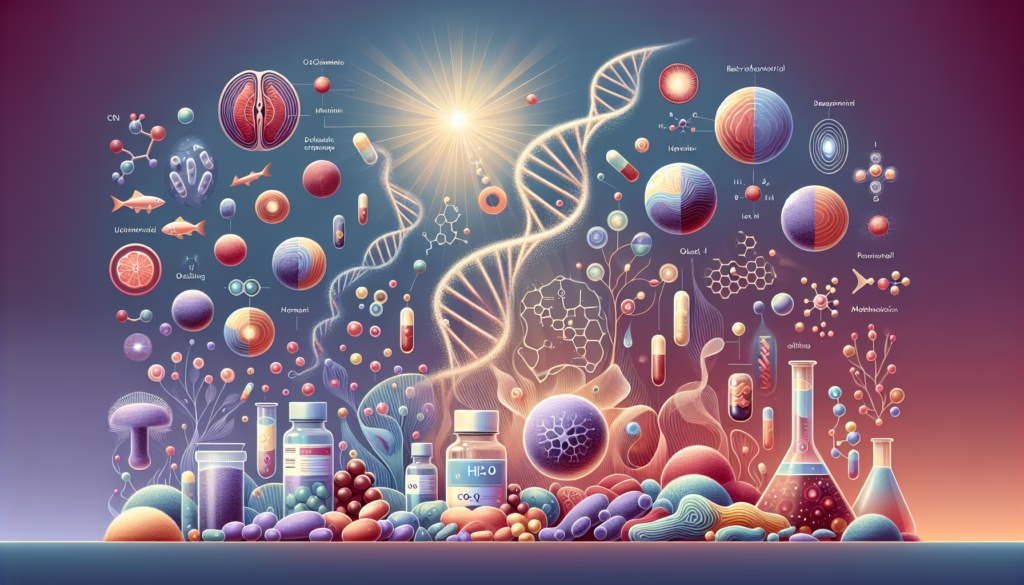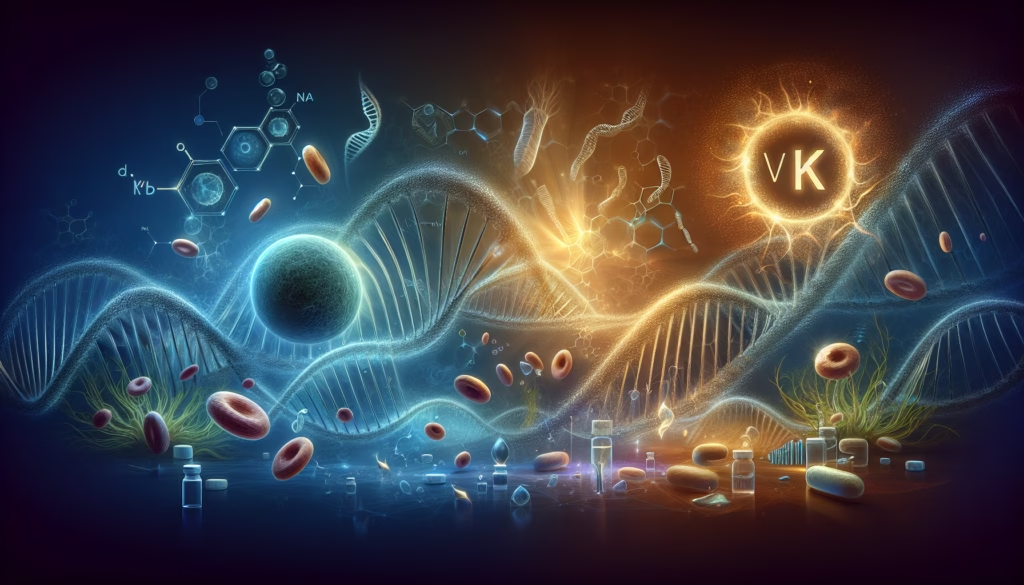
Beta Glucan
Discover the science-backed potential of beta glucan as an adjunct in cancer therapy. This post delves into the latest research
Click 
Caffeic acid (CA) is a bioactive compound found in various herbs, vegetables, fruits, tea, and coffee. It is known for its antioxidant, anti-inflammatory, and anticancer properties, making it a promising agent in cancer therapy and prevention.
Antioxidant and Pro-Oxidant Effects: CA exhibits both antioxidant and pro-oxidant roles. In normal cells, it acts as an antioxidant, reducing oxidative stress. However, in cancer cells, it can induce oxidative DNA damage, leading to cell death1510.
Inhibition of Angiogenesis: CA blocks the action of STAT3 and reduces the expression of VEGF and HIF-1α, which are crucial for cancer angiogenesis15.
Inhibition of MMP-2 and MMP-9: By suppressing these matrix metalloproteinases, CA reduces cancer cell invasion and metastasis110.
Apoptosis Induction: CA induces apoptosis in cancer cells by activating caspase-3 and modulating the MAPK signalling pathway47.
Cervical Cancer: CA induces apoptosis in human cervical cancer cells through the mitochondrial pathway4.
Prostate Cancer: It inhibits cell proliferation and induces apoptosis by modulating the IL-6/JAK/STAT-3 pathway4.
Multiple Myeloma: CA significantly induces apoptosis in human myeloma cells7.
Hepatocellular Carcinoma (HCC): CA reduces tumour growth and invasiveness by suppressing MMP-2 and MMP-910.
Caffeic Acid Phenethyl Ester (CAPE): CAPE exhibits potent anti-tumour effects, particularly against HCC, and can enhance apoptosis when combined with other treatments36.
Synergistic Effects: CA can enhance the efficacy of anticancer drugs by sensitizing cancer cells to apoptosis8.
Despite its promising anti-cancer properties, CA faces challenges such as low intestinal absorption and bioavailability. Further research is needed to improve its pharmacokinetics and explore its potential in clinical settings.
In conclusion, caffeic acid and its derivatives hold significant potential in cancer therapy due to their multifaceted mechanisms of action against various cancer types. Continued research into their therapeutic applications could lead to innovative treatments for cancer.
Currently, there is no established safe dose for caffeic acid as a medicinal agent. The available scientific evidence does not provide a clear guideline for dosing, and it is generally recommended to follow the directions on product labels and consult with healthcare professionals before use467.
However, in experimental settings, specific doses have been used.
For instance, in vivo studies have used a dose of 5.4 mg/kg of caffeic acid combined with doxorubicin (DOX) to achieve significant tumour suppression without adverse effects12.
Additionally, acute toxicity tests with caffeic acid phenethyl ester (CAPE) derivatives have shown safety up to 5 g/kg in animal models3.
Despite these findings, more research is needed to determine appropriate dosages for human use.
Breast Cancer, Colorectal Cancer, Leukemia, Liver Cancer, Lung Cancer, Prostate Cancer, Skin Cancer (including Melanoma)
Caffeic acid, while generally considered safe when consumed in foods, lacks comprehensive data on its safety and side effects when taken as a supplement.
However, potential side effects and interactions have been noted:
Gastrointestinal Issues: Upset stomach and diarrhoea are possible side effects when taking caffeic acid supplements3.
Headache: Some individuals may experience headaches3.
Mild Stimulating Effect: Caffeic acid might have a mild stimulating effect, which could worsen insomnia, though this effect is much less pronounced than that of caffeine15.
Medications Moved by Cellular Pumps: Caffeic acid may interact with medications transported by Organic Anion Transporter 1 (OAT1) and Organic Anion Transporter 3 (OAT3), potentially altering their effects and side effects. Examples include acyclovir, ciprofloxacin, NSAIDs, and simvastatin15.
Levodopa: There is a minor interaction with levodopa, as caffeic acid might affect its metabolism, though the significance of this interaction is unclear15.
Research on combination therapies involving caffeic acid and conventional cancer treatments remains in early stages. Some preclinical studies suggest potential synergistic effects, but robust clinical evidence is currently lacking. Further research is needed to explore potential benefits and risks of combination approaches.
Caffeic acid (CA) may have several quality of life impacts due to its diverse biological activities:
Antioxidant and Anti-Inflammatory Effects: These properties can help reduce oxidative stress and inflammation, potentially improving overall health and reducing the risk of chronic diseases like cancer, heart disease, and neurodegenerative disorders12. This could enhance quality of life by reducing symptoms associated with these conditions.
Anti-Aging and Skin Health: CA’s antioxidant properties may help protect the skin from sun damage and improve its appearance, potentially enhancing self-esteem and quality of life14.
Cancer Treatment Support: CA may help mitigate some side effects of cancer treatments by reducing oxidative stress and inflammation, which could improve patients’ quality of life during therapy1.
Neuroprotective Effects: Its potential to affect neurodegenerative diseases like Alzheimer’s and Parkinson’s could lead to improved cognitive function and quality of life for those affected27.
Physical Performance and Fatigue: Some studies suggest that CA can improve exercise tolerance and reduce markers of fatigue, which might enhance quality of life by allowing individuals to engage more actively in physical activities1.
However, these benefits are largely based on preclinical studies and theoretical applications. More clinical research is needed to fully understand the impact of caffeic acid on quality of life.
We’ve done our best to include as much information as possible for this supplement.
If you have any other questions, please send us a message or join our Skool Group and ask our knowledgeable and friendly community.
Caffeic acid is generally available as a research chemical or dietary supplement. However, regulatory status and accessibility may vary considerably between countries. It is important to consult local regulations before obtaining or using caffeic acid for any purpose.
No specific data was found in peer-reviewed literature for patient demographics.
Caffeic acid (CA) has been studied for its ability to overcome resistance mechanisms in cancer cells, particularly those related to drug resistance and acidic microenvironments. However, the resistance mechanisms against caffeic acid itself are not well-documented. Instead, CA is noted for its role in attenuating resistance in cancer cells:
Overcoming Drug Resistance: CA helps in reversing multidrug resistance (MDR) by inhibiting the efflux function of human P-glycoprotein (P-gp), a major drug efflux pump responsible for MDR in cancer cells45. It does this by competitively inhibiting the efflux of chemotherapeutic drugs like doxorubicin, thereby increasing their intracellular concentration and enhancing their efficacy45.
Resistance in Acidic Microenvironments: CA can inhibit the proliferation and clonogenicity of acid-adapted cancer cells, which often exhibit resistance to conventional therapies. It achieves this by modulating signalling pathways such as PI3K/Akt and ERK1/2, which are involved in drug resistance1.
While there is no specific documentation on resistance mechanisms against caffeic acid itself, its ability to modulate various signalling pathways and overcome drug resistance makes it a valuable adjunct in cancer therapy. Further research is needed to explore any potential resistance mechanisms that might develop against CA.
Preclinical studies on caffeic acid (CA) have explored its potential as an anticancer agent, focusing on its mechanisms of action and efficacy in various cancer models. Here are some key findings from these studies:
Antioxidant and Pro-Oxidant Effects: CA exhibits both antioxidant and pro-oxidant properties. In cancer cells, it can induce oxidative stress by enhancing DNA oxidation, leading to cell death14. This dual action is attributed to its chemical structure, which includes free phenolic hydroxyls and a double bond in the carbon chain4.
Inhibition of Angiogenesis: CA reduces angiogenesis by suppressing the expression of VEGF and HIF-1α, crucial factors for tumour vascularization7. It also blocks the action of STAT3, further inhibiting angiogenic pathways7.
Suppression of MMP-2 and MMP-9: CA inhibits these matrix metalloproteinases, which are involved in tumour invasion and metastasis14.
Induction of Apoptosis: CA induces apoptosis in cancer cells by activating caspase-3 and modulating signalling pathways like MAPK5.
Colon Cancer: Studies have shown that CA exerts anti-tumour effects in colon cancer cells by activating AMPK1.
Lung Cancer: CA has been found to inhibit lung cancer cell growth by targeting TMEM16A and regulating the MAPK pathway5.
Hepatocellular Carcinoma (HCC): CA and its derivatives, such as CAPE, have demonstrated significant anti-HCC effects by suppressing MMP-2 and MMP-9, and inhibiting NF-κB activation46.
Cervical and Prostate Cancer: CA induces apoptosis in cervical and prostate cancer cells through various mechanisms, including DNA oxidation and modulation of signalling pathways14.
Despite promising preclinical results, CA faces challenges such as low oral bioavailability and poor intestinal absorption17.
Future studies should focus on improving its pharmacokinetics, possibly through nanoencapsulation or other formulations, to enhance its therapeutic efficacy in clinical settings4. Additionally, more comprehensive in vivo studies and clinical trials are needed to fully elucidate CA’s potential as an anticancer agent.
As of the latest search, no active clinical trials specifically investigating caffeic acid as a direct cancer treatment are listed on major clinical trial registries. This highlights the need for well-designed clinical studies to evaluate its potential therapeutic efficacy.
Current research on genetic markers predicting response to caffeic acid in cancer is limited. Further studies are needed to identify potential biomarkers that could guide personalized treatment approaches.

Discover the science-backed potential of beta glucan as an adjunct in cancer therapy. This post delves into the latest research

Explore the emerging world of hydrogen gas (H₂), also known as Brown Gas, and its remarkable potential as an adjunct

Explore the latest scientific insights into vitamin K2 and its promising role in cancer therapy. In this comprehensive blog post,
Apoptosis, or programmed cell death, is a natural process where cells self-destruct when they are damaged or no longer needed. This is crucial for maintaining healthy tissues and preventing diseases like cancer.
Drugs and supplements that induce apoptosis help eliminate cancerous cells by triggering this self-destruct mechanism, ensuring that harmful cells are removed without damaging surrounding healthy tissue.
Understanding and harnessing apoptosis is vital in the fight against cancer, as it targets the root cause of the disease at the cellular level.
Cell proliferation is the process by which cells grow and divide to produce more cells. While this is essential for growth and healing, uncontrolled cell proliferation can lead to cancer.
Drugs and supplements that inhibit cell proliferation help prevent the rapid multiplication of cancerous cells, slowing down or stopping the progression of the disease.
By targeting the mechanisms that drive cell division, these treatments play a vital role in controlling and potentially eradicating cancer.
Cancer cells often hijack specific biological pathways to grow and spread. Drugs and supplements that target these pathways can disrupt the cancer cell’s ability to survive and multiply.
By focusing on the unique mechanisms that cancer cells use, these treatments can be more effective and cause fewer side effects compared to traditional therapies.
Targeting specific pathways is a key strategy in precision medicine, offering a tailored approach to combat cancer at its core.
Angiogenesis is the process by which new blood vessels form, supplying nutrients and oxygen to tissues. Cancer cells exploit this process to fuel their growth and spread.
Drugs and supplements that inhibit angiogenesis can effectively starve cancer cells by blocking the formation of these new blood vessels.
By cutting off the supply lines that tumors rely on, angiogenesis inhibitors play a crucial role in controlling and potentially shrinking cancerous growths.
Immunotherapy harnesses the power of the body’s immune system to combat cancer. By boosting or restoring the immune system’s natural ability to detect and destroy cancer cells, immunotherapy offers a targeted and effective approach to treatment.
Drugs and supplements that support immunotherapy can enhance the immune response, making it more efficient at identifying and attacking cancer cells.
This innovative approach not only helps in treating cancer but also reduces the risk of recurrence, providing a powerful tool in the fight against this disease.
Inflammation is the body’s natural response to injury or infection, but chronic inflammation can contribute to the development and progression of cancer.
Drugs and supplements with anti-inflammatory properties help reduce inflammation, thereby lowering the risk of cancer and other chronic diseases.
By targeting the inflammatory processes, these treatments can help maintain a healthier cellular environment and prevent the conditions that allow cancer to thrive.